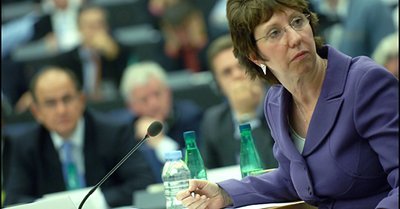A predictable innovation …
Although the creation of the European External Action Service (EEAS) thus appears like one of the major changes brought by the Lisbon Treaty, it would seem than it is rather based on the external delegations of the Commission, which have existed since the ECSC Treaty with the foundation in 1954 of a Representation of the High Authority in Washington.
It is easily forgotten today, that while the organisation of the EEAS is still vague, more than 5000 European officials work already abroad. From Kenya to Bolivia, they defend the interests of the Union and negotiate agreements between the EU and the rest of the world. These officials however, were at the beginning distributed within various Directorates-General of the Commission, and it is only following a reform of 2002 that they were gathered in the same service under the Directorate-General for External Relations.
A service at the High Representative’s disposal
Why then has the EEAS announced as such a major reform? We can understand it only by connecting it to the creation of the role of High Representative of the Union for Foreign Affairs and Security Policy, a role that the constitutional treaty of 2004 meant to call “EU Minister for Foreign Affairs”. This service is supposed to become the military arm of the High Representative, thus creating a true Ministry for Foreign Affairs of the EU.
Since the High Representative also chairs the meetings of Foreign Affairs of the Council of the EU, which brings together the Ministers for Foreign Affairs of the 27 Member States, the European diplomatic service will also be required to represent the Council, and no longer only the Commission. Consequently the EEAS would make it possible to create a single embassy of the EU wherever it is present.
How will it be set in place?
Article 27 of the Lisbon Treaty specifies that the organisation and the operation of the EEAS are defined by a Council Decision, on a proposal of the High Representative. It is therefore up to Catherine Ashton to work out a formalised structure for this service, also taking into account the budgetary constraints as the European Parliament outlined in a statement of 25th September 2009 on the setting up of the EEAS.
The organisation of the EEAS will also have implications on diplomatic work on the ground, since it is the delegations of the European Union which will be required to chair the long term co-ordinating meetings between ambassadors in all the countries where they are present.
The question of recruitment
It is envisaged that the officials of the Commission are supported by national ministries’ diplomats and officials of the Council. In spite of their varied origin, all the members of the EEAS would have equivalent statutes and roles, thus seeking to create a genuine esprit de corps.
Indeed, according to the statement of the European Parliament, the aim of this statute standardisation is to achieve “a common European diplomatic culture regarding the international relations of the EU”.
Obviously, the question of personnel represents a real challenge. The integration of national officials’ into the delegations of the EU – in order to be successful - will require a training procedure “to Europeanise” the national diplomats, which is likely to take time. In that regard, this especially involves a change in mentality of the national administrations.
What kind of proposals can we thus expect Catherine Ashton will submit to the Council? She has in fact little room for manoeuvre insofar as foreign affairs and diplomacy remained up to now an exclusively national competence in the view of the heads of government. There is no doubt that negotiations will be particularly rough in the Foreign Affairs Council.
In particular, what is to be decided is how the national agents’ recruitment in the delegations of the EU will be done: by competition or by internal decision of the national ministries? At the same time, the European Parliament will be certainly anxious to strictly exercise its budgetary control power, in order to weigh in on this process of which it did not ceased to denounce the lack of parliamentary control.
Clear answers however, shall be found to the questions which arose regarding the capacity of the High Representative and of this European diplomatic service to finally give a true face to the EU at the international level. The European reaction to the Haiti disaster is not very encouraging. In any case, the most optimistic forecasts do not seem to picture the EEAS turning to full capacity before 2014. Europe therefore, still has time to reflect.


1. On 8 February 2010 at 19:40, by nevilleb Replying to: The European diplomatic Service
Replying to: The European diplomatic Service
A thought provoking and insightful article, raising valid questions as to what the future holds. i enjoyed reading it
Follow the comments: |
|
